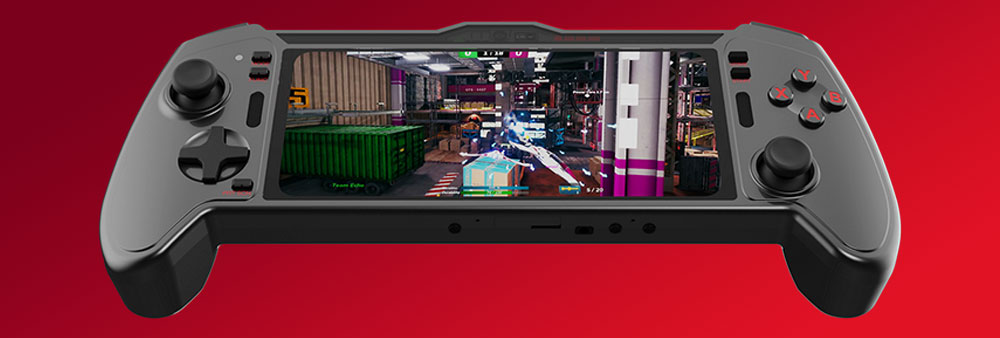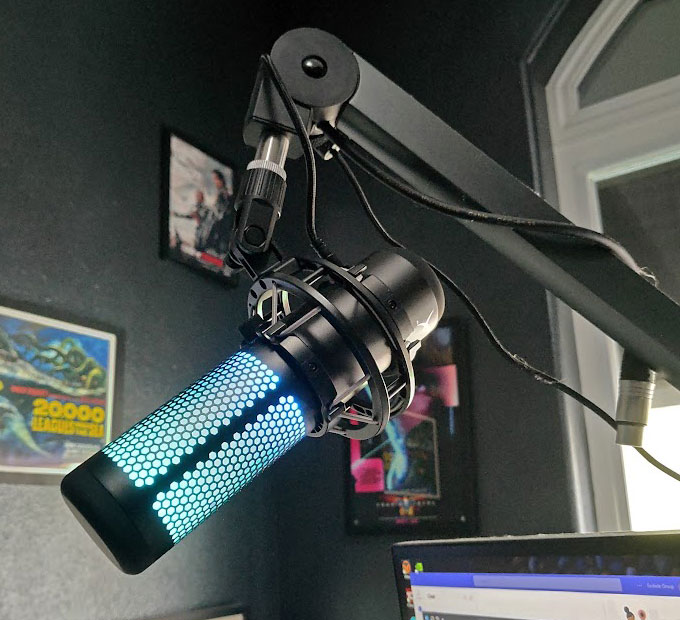Qualcomm last week announced three new platforms for handheld gaming that target streamers, those on a budget who want to game locally, and those who want the best portable gaming experience on the planet.
These gaming platforms will challenge game consoles, favoring portability over performance while providing a richer, high-performance gaming experience than you can get on a smartphone and far more portability than you currently get with a gaming PC or console.
Let’s talk about handheld gaming this week and why these new systems could be the hottest thing this holiday season. We’ll close with my Product of the Week: my new favorite microphone, the HyperX QuadCast S.
Getting Serious About Handheld Gaming
Handheld gaming has gone vertical, with total revenues for handheld games now exceeding the combined revenue of both consoles and PCs. It’s easy to understand why: Your smartphone goes everywhere with you, but your gaming console and PC do not.
We often have downtime while waiting or traveling during which we want to entertain ourselves, but using a smartphone for gaming is problematic. Gaming runs down the phone battery so that when you need your phone, you may lack the power to use it. If you get a call, social media notification, email, or text while gaming, it can disrupt the experience.
Finally, designers did not create the smartphone as a gaming device. The screen controls are often laggy, your fingers obscure the screen, and external controls tend to be too hard to secure properly and don’t work on all phones due to the differences in the physical designs.
More recently, the advent of head-mounted displays has made smartphone controls more difficult because the display makes seeing the phone for proper finger placement on the screen difficult, forcing a more dedicated control solution where the control buttons are easier to hit correctly when you can’t see the controller.
I’ve been using Goovis head-mounted displays for years. They are great for movies, but because of the controller issue, they don’t work that well for gaming.
So, much like we did with consoles to provide a more focused gaming experience over PCs, these dedicated handheld devices attempt to do the same thing for gaming by giving users a focused device that does the job better but doesn’t compromise their smartphone.
The Snapdragon G Series Portfolio
Qualcomm announced three tiers in its Snapdragon G Series handheld gaming portfolio:
- Snapdragon G1, expected to cost in the $200 range, is just for those who want to stream video and games from the cloud using a service like GeForce Now.
- Snapdragon G2 is for those who want to game locally and stream content. The G2 has more performance and a higher price, likely in the $300-$400 range.
- Snapdragon G3 is for performance gamers who want a console-like gaming experience and need that extra performance in a product that is likely to cost over $400.
Qualcomm showcased a prototype based on the Snapdragon G3x Gen 2 platform — its newest enthusiast-class processor. Its carbon-fiber case gives it a distinctly competitive look and feel and a far richer appearance, which explains the higher price and performance.

Qualcomm’s new flagship in the G series is designed to deliver devices with active cooling fans and delivers desktop-level gaming features on installed games, including Ray Tracing to create graphics with life-like reflections, shadows, and illuminations. (Image Credit: Qualcomm)
Expectations, however, are that OEMs will come up with their own designs that will have different-sized screens, physical designs, and individual price points as they all compete for fourth-quarter holiday dollars.
Personally, I’d like to see a design that got rid of the display altogether in favor of a head-mounted display. That would make the overall experience more immersive and less likely to disrupt your significant other from sleeping, working, or reading next to you. It would also allow you to play content that might be inappropriate for kids sitting next to or behind you on a plane.
Better Than Smartphones for Gaming
These dedicated devices focused on gaming come with built-in controllers and separate, high-performance GPUs that aren’t compromised by background apps or phone operations. With built-in controllers, the experience is like using a gaming console with simplified menus that get you to content quickly. The bespoke designs and the potential for custom cases should make others lust after your device when they see it in the open.
While cross-platform games have had problems in the past, part of the goal for this platform is to address better the mobile opportunity and the potential for using the devices for more immersive, on-the-road, multiplayer games. Imagine a future where you could connect a bunch of these on a bus, plane, or ship to create a collective multiplayer game experience among your fellow passengers.
Wrapping Up
One or more of these new handheld gaming systems could emerge as this season’s breakout holiday hit. Affordable and innovative, these devices offer a unique portable gaming experience. They are among the first platforms to fully integrate head-mounted displays, which many of us think sets the stage for a shift away from traditional, screen-based gaming.
I’ve seen the future of handheld gaming, and it is awesome. These products are due out before the holidays, so save your pennies because this product ramp will be very difficult to miss. I expect supplies will be constrained almost immediately, so if you want one of these devices, get it early before supplies are all gone.
One other thing: This platform will come to market during the birth of generative AI, suggesting that some of the coming content will be uniquely engaging and may even have AI-driven non-player characters (NPCs), which would be incredible.
The future of personal gaming is exciting and is coming to a hand near you.

HyperX QuadCast S Microphone
I do a lot of interviews and weekly streamed shows, so both the camera and microphone I use are extremely important.
Recently, I was having trouble with my professional grade and rather expensive Shure SM7B on Teams (Teams has been getting kind of buggy lately), so I decided to swap it out for the HyperX QuadCast S microphone.
The decision couldn’t have pleased me more, especially considering that the Shure set me back $400. The HyperX is only around $140 and does not need a USB amp to work with my PC, making it one heck of a bargain.
The HyperX QuadCast S is lighted and looks cool floating over my desk.

(Photo by Author)
The sound quality is impressively good, and the mic has adjustments for sound field and gain so you can adjust it for your environment. The QuadCast S also has a single mute button placed on the tip of the microphone that, when pressed, also turns the light off so that you know it’s not on.
Another nice feature is that it has a headset socket that makes adding a headset to the device easy, which is often a problem for a desktop setup.
One complaint is that I’d like to be able to adjust the microphone’s colors so they match the lights in my PC. The microphone comes with both a nice, weighted stand (much lighter than the Shure stand) and a boom mount, which I chose to use instead.
In short, the HyperX QuadCast S is eye-catching, works well, comes at a reasonable price, and looks awesome on my desk, so it is my Product of the Week.


